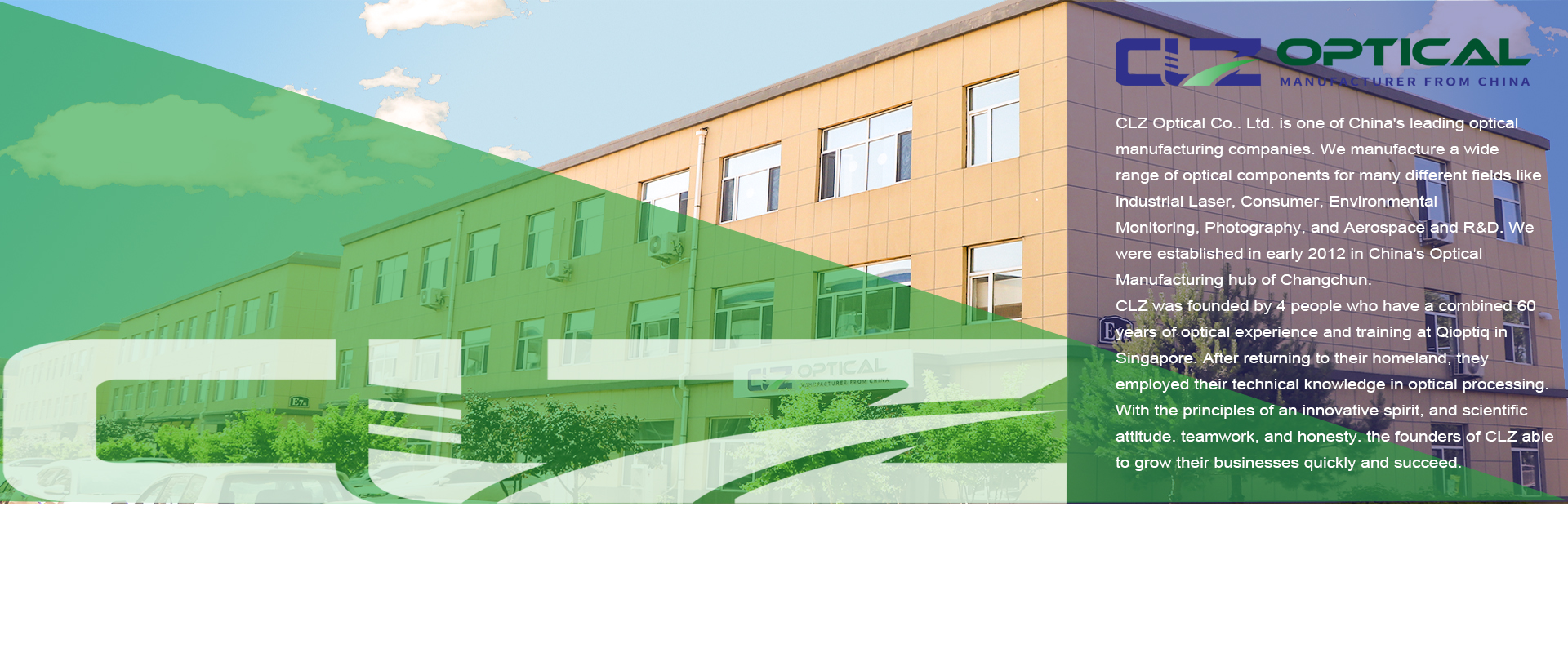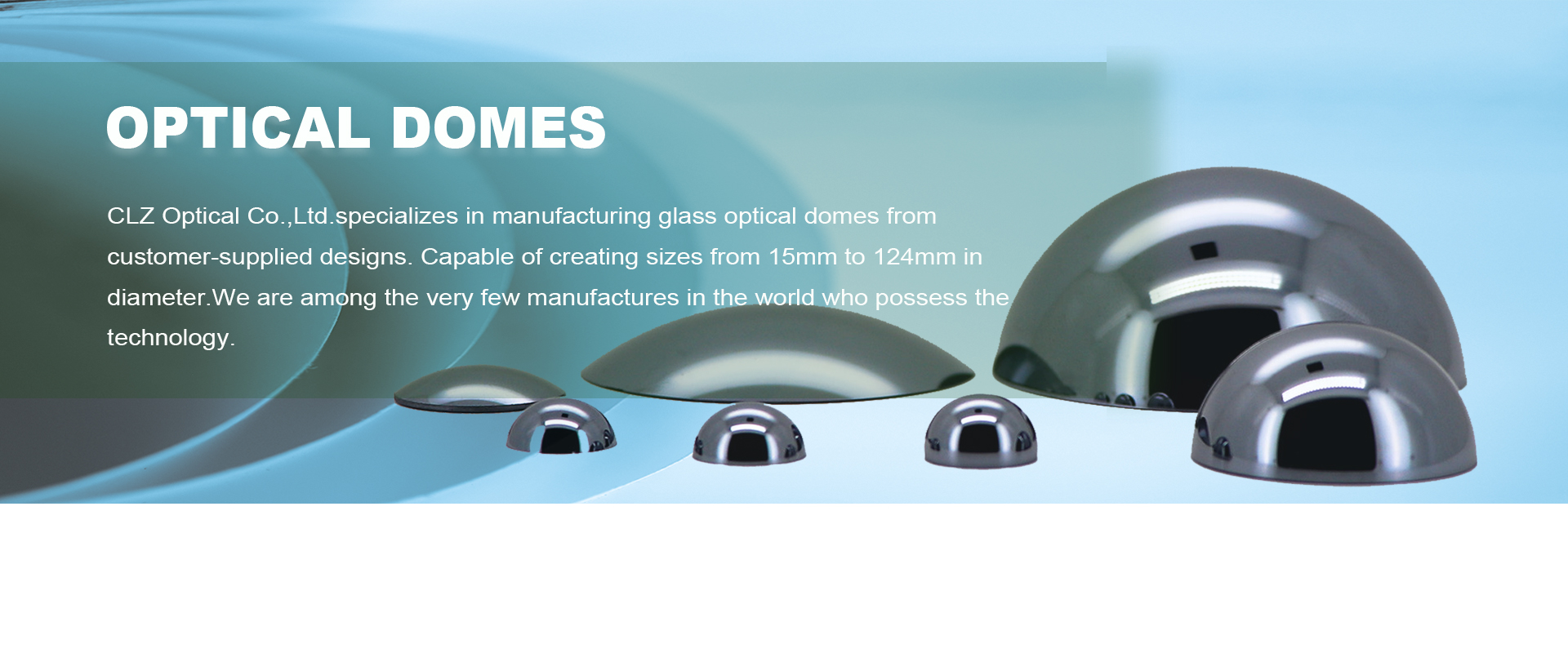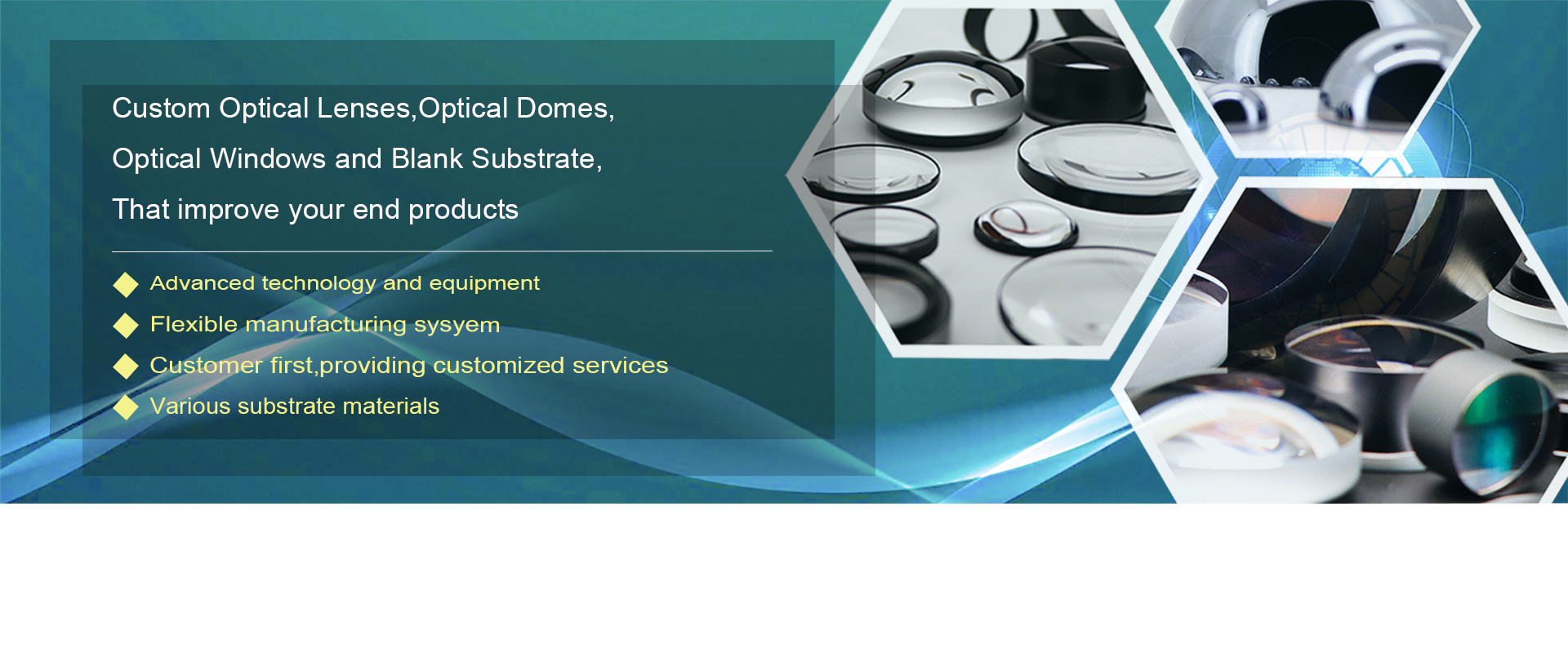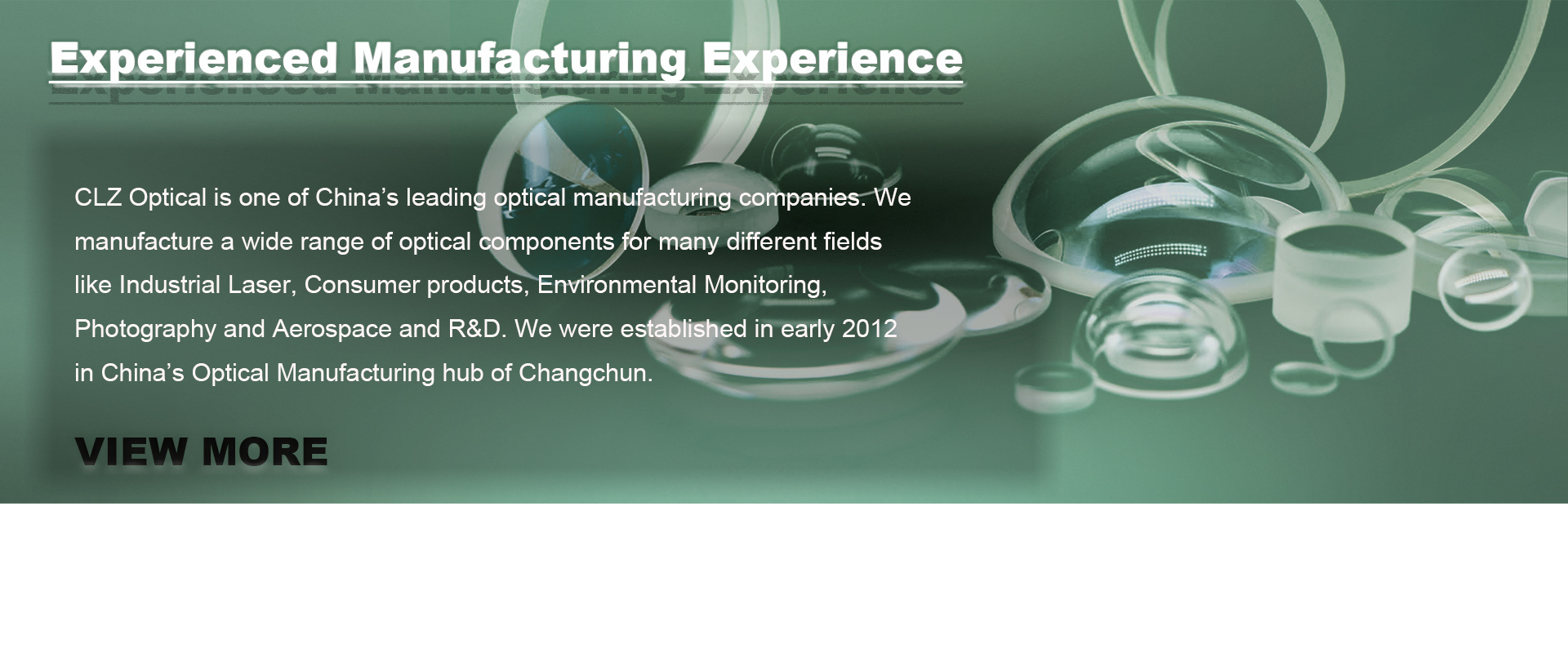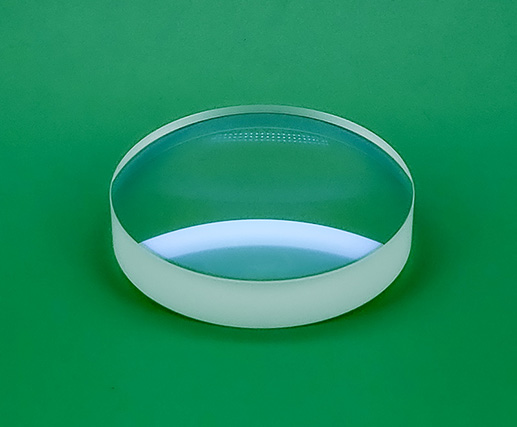Optical Windows
◢Optical Windows
The optical windows is a double-sided parallel plane plate, which does not change the magnification of the system. Optical windows are usually used as a external protective barrier to protect optical detectors, sensors, optical lenses from the light transmission. Optical windows are commonly used in biomedicine, scientific research, underwater imaging, aerospace, optical instruments, laser optics, military defense, and other fields.CLZ Optical Co.,Ltd. can provide you with customized optical windows made of various optical materials, such as N-BK7, H-K9L, B270, Borofloat, silicon (Si), ultraviolet quartz glass, and sapphire. . And can provide a variety of coatings in the ultraviolet (UV), visible light (VIS) or infrared (IR) range.
◢Commen substrate and characteristics of optical windows
Optical windows are sorted by optical materials:
N-BK7, H-K9L Windows
The chemical properties of N-BK7and H-K9Lare very stable, scratch and corrosion resistant. N-BK7 and H-K9L are easy to be ground and polished and is a kind of high-quality optical material. BK7 has high homogeneity, with low content of bubbles and magazines. They have good internal transmittance in the range of visible and near infrared spectrum (330 nm-2.0 µm). When the thickness of optical materials is 10mm, the internal transmittance is greater than 90%.
Fused silica Windows
According to the spectral region, quartz glass is divided into JGS1, JGS2, JGS3 (related to the Hydroxyl Group in the material). JGS1 is Fused Silica with UV-Quality. It has high transmittance in the 180-2500nm wave band (about 93.5%). JGS2 with a transmission rate of more than 93.5% is transparent in the 220-2500 nm band. JGS3 is Fused Silica with IR-Quality. It has high transmittance in the 260-3500nm wave band.
Fused silica is resistant to high temperatures up to a maximum operating temperature of 1450 ° C; resistant to acid corrosion and hardly reacts with acids; low coefficient of thermal expansion and can withstand severe temperature changes. Fused silica windows can be used in lasers, laboratory instruments, medical instruments, security monitoring, optical communications, etc.
Silicon Windows
The density of silicon substrate is low. It is half the density of germanium or zinc selenide. The weight of silicon is relatively light, which is suitable for applications requiring weight. Optical elements made of silicon are harder and less fragile than optical elements made of germanium. In addition, silicon has high thermal conductivity and has good transmittance in the near infrared, mid infrared and far infrared bands. The commonly used spectral band of silicon windows is the near infrared band 1.2-8μm, which is often used in infrared cameras, infrared Detector, infrared spectrum window, etc. In addition to silicon windows, siliocn can also be made into silicon mirrors, silicon lenses and other applicaitons, which are used in high-precision instruments in the infrared band, various laser equipment and industrial applications.
Fluoride Windows
Fluoride materials have a high transmittance in the ultraviolet to far infrared range (calcium fluoride high transmission range 180 nm-8.0 µm, magnesium fluoride high transmission range 200 nm to 6.0 µm), high mechanical and environmental stability, among which Magnesium fluoride can be used in high-pressure environments. Calcium fluoride windows are commonly used in excimer lasers, spectrometers, low temperature thermal imaging systems and other instruments. Magnesium fluoride windows are generally used in the vacuum ultraviolet radiation sources, mechanical vision, microscopes and industrial applications.
◢IR Windows And UV Crystal
Infrared window is an infrared window is an optical window can be through the ultraviolet, visible light, infrared, will have an infrared window installed in the switchgear cabinet, you can realize the switchgear cabinet in the operating state of infrared imaging temperature measurement. And can realize the traditional thermocouple, temperature probe, fiber optic and so on can not achieve accurate temperature measurement.
Classification and use of infrared windows:
Infrared windows can be classified according to the operating band: long-wave infrared windows, short-wave infrared windows and explosion-proof windows.
1. Long-wave infrared window: its working band is: 0.15-14μm, mainly detecting low temperature, room temperature, in the electric power industry, long-wave basically meet the existing power equipment fault detection, simple, fast, comprehensive, accurate solution to the difficult problem of detection in the switchgear, to achieve the switchgear of the on-line real-time detection. At 0.15μm, the infrared transmission rate of the window is 94%; at 12.5μm, the infrared transmission rate of the window is 92%.
2. Short-wave infrared window: Its working band is: 0.15-7μm, mainly detecting high temperature objects over 500℃, such as in the steel-making and other industries. At 0.15μm, the infrared transmission rate of the window is 94%; at 7μm, the infrared transmission rate of the window is 92%.
3. Explosion-proof window: mainly used in flammable and explosive complex environment.
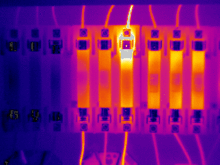
The infrared window makes it easy to carry out all kinds of non-destructive maintenance on the equipment inside the electrical cabinet and realize the condition inspection. It is convenient for electric power maintenance personnel to discover the hidden danger of high-voltage accidents and solve and maintain them in time.
Infrared windows substrate materials
IR Windows substrate materials options from UQG Optics include Calcium Fluoride (CaF2), Barium Fluoride (BaF2), Germanium (Ge), Magnesium Fluoride (MgF2), Borosilicate, Sapphire, Silicon (Si), Fused Quartz, Zinc Sulphide (ZnS) and Zinc Selenide (ZnSe).
1. CaF2
Calcium fluoride has high transmittance from UV to IR (250nm~7μm), so it is widely used in the manufacture of prisms, windows and lenses, etc. In some applications with a wide spectral range, it can be used directly without coating, especially it has a small absorption and high laser threshold, which is very suitable for excimer laser optics. Calcium fluoride lens or window, the diameter range is: 5~150mm, the surface accuracy can usually reach 40/20, the surface flatness can reach λ/10@33nm (the ratio of the thickness of the lens to the diameter needs to comply with the processing ratio).
2. BaF2
Barium fluoride crystals have a wide range of transmittance, with good transmittance in the wavelength range of 0.13μm~14μm. The performance of single crystal and polycrystal is basically the same, and the material is difficult to come out of single crystal, so the price of single crystal is one times of polycrystal. Barium fluoride crystal is an ideal material for making various optical windows, prisms and lenses and other optical components. It can be used for infrared switchboard windows, Fourier gas analysis windows, oil and gas detection, high power lasers, optical instruments and so on. Calcium fluoride lens or window, the diameter range is: 5~150mm, the surface accuracy is usually up to 40/20, and the surface flatness is up to: λ/10@633nm (the ratio of the thickness of the lens to the diameter needs to be in accordance with the processing ratio).
3. Silicon
Silicon (Si) single crystal is a chemically inert material with high hardness and insoluble in water. It has good light transmission in the 1.2 -7um band, and it also has good light transmission in the far-infrared band of 30-300μm, which is a feature that other infrared materials do not have. Silicon (Si) single crystal is usually used as a substrate for 3 -5μm mid-wave infrared optical windows and optical filters. Because of the material's good thermal conductivity and low density, it is often used in the production of laser mirrors and more sensitive to the weight of the volume of the occasion. Silicon lenses or windows, the use of optical grade silicon single crystal, the diameter range is: 5 ~ 260mm, the surface accuracy is usually up to 40/20, the surface flatness up to: λ/10 @ 633nm (the ratio of the thickness of the lens to the diameter of the lens to comply with the processing ratio.
◢Why are CLZ Optical Co.,Ltd. your best choice?
CLZ Optical Co., Ltd. always upholds the spirit of innovation and scientific attitude. We constantly improve the methods and equipment for producing optical components. Our team has extensive production experiences. The four founders have worked and studied at the famous Singapore optical company Qioptiq. Over the years, our company has provided many domestic and foreign customers with custom spherical lenses, optical domes, optical windows, optical mirrors, optical prisms and other optical components. According to the requirements of clients, we use various optical materials required to produce coated or non-coated optical components to meet the application needs of customers. Our testing standards and quality assurance have won the trust of customers and established good relations with continuous follow-up cooperation. We always value the quality of each batch of optical components and value the trust of clients every time. Quality creates value, which is our business development philosophy.










